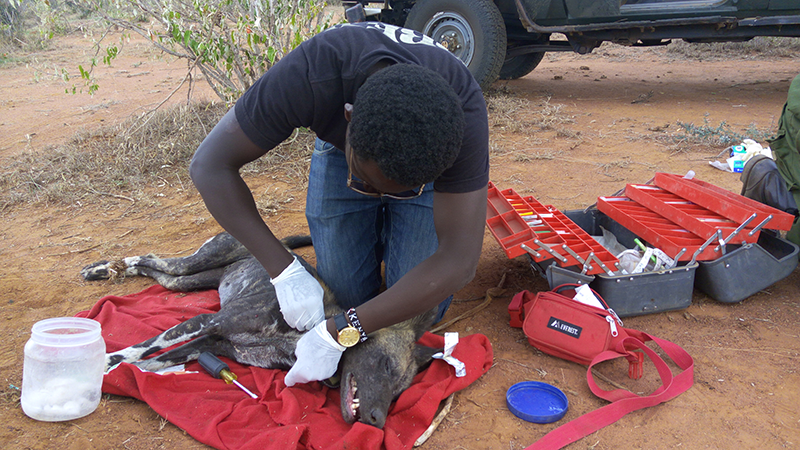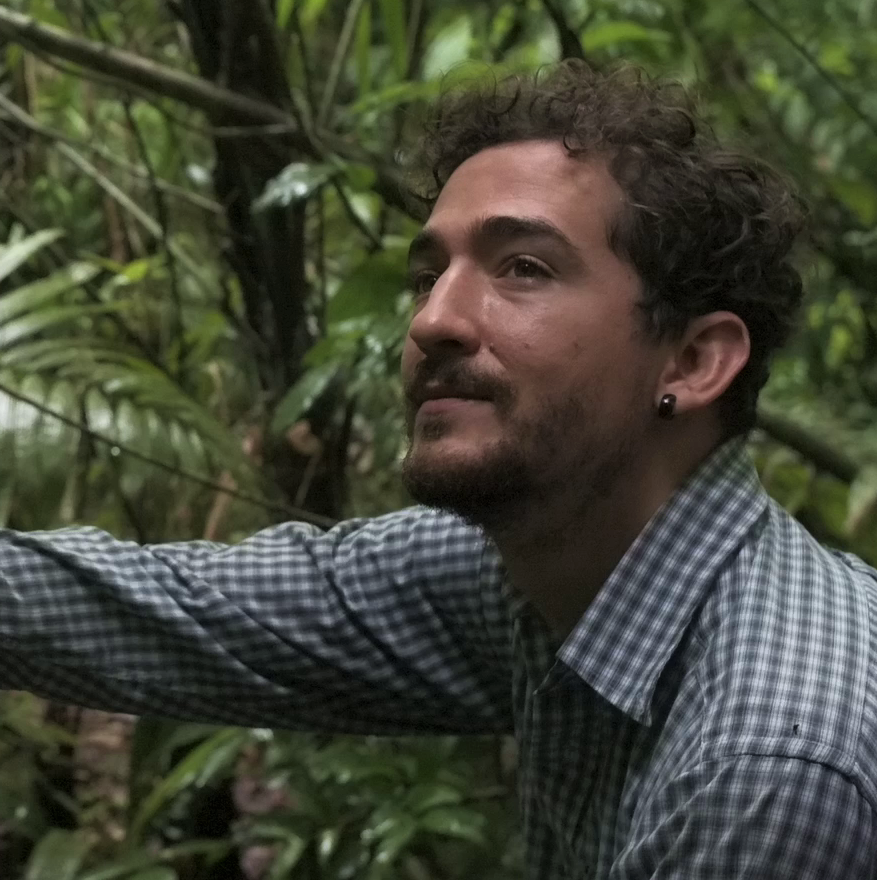Dedan Kabuu Ngatia, conservation and restoration of African wild dogs
Dedan Kabuu Ngatia
Biodiversity Graduate Student Research Enhancement Grant Awardee
Department of Zoology & Physiology
Graduate Advisor: Dr. Jacob R. Goheen
Objective of the project:
I will quantify the relative importance of the two greatest threats to African wild dogs— potential for infectious disease outbreaks, and retaliatory killing by pastoralists following livestock depredation—and the role of domestic dogs in these sources of mortality. The proposed research constitutes the first year of my dissertation work, which ultimately will enhance our understanding of how domestic dogs, livestock production, and warming/drying conditions influence population viability of African wild dogs.
Background, rationale and hypotheses:
Increasingly, biodiversity conservationists are recognizing that formally protected areas (i.e., national parks and reserves overseen by governments) across the globe are too small, too few, and too unreliably funded to support viable populations of many wide-ranging species (1). Consequently, a shift in mindset is occurring among many conservationists, who are embracing the potential for human-occupied landscapes to complement (or even replace) the traditional role of protected areas in conserving biodiversity. This expansion of how and where conservation occurs is particularly relevant with regard to populations of large carnivores, which frequently range outside of protected areas and exact an economic toll on humans (2,3).
The African wild dog (Lycaon pictus) is a globally endangered species, and is the second-most imperilled canid on the African continent (after the Ethiopian wolf; Courchamp et al., 2000). Classic work on this species was conducted in protected areas of eastern and southern Africa, and concluded that African wild dogs (1) were highly sensitive to human activities; (2) required large (>100 kg) ungulates as prey; and therefore (3) could thrive only in vast, undisturbed landscapes free of human activity (4-6). However, and following the recolonization of African wild dogs to Laikipia and Samburu Counties in central Kenya in 2003 after a 30-year absence, conservationists have been inspired by the realization that this species can coexist alongside people and their livestock (7-9).
Share This Page


The African wild dog (Lycaon pictus) is a globally endangered species, and is the second-most imperilled canid on the African continent.

Following the recolonization of African wild dogs to Laikipia and Samburu Counties in central Kenya in 2003 after a 30-year absence, conservationists have been inspired by the realization that this species can coexist alongside people and their livestock
Research Highlights





